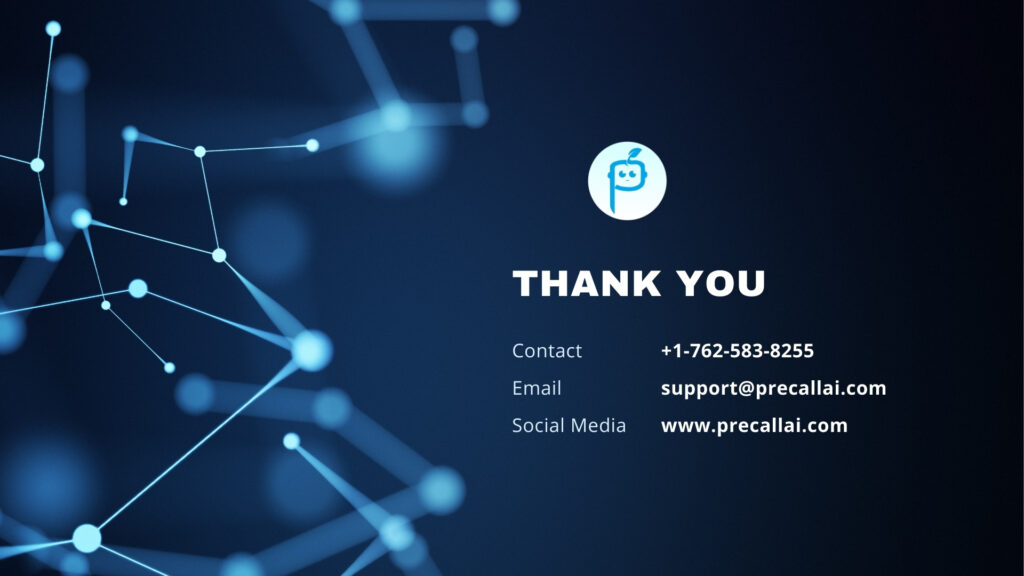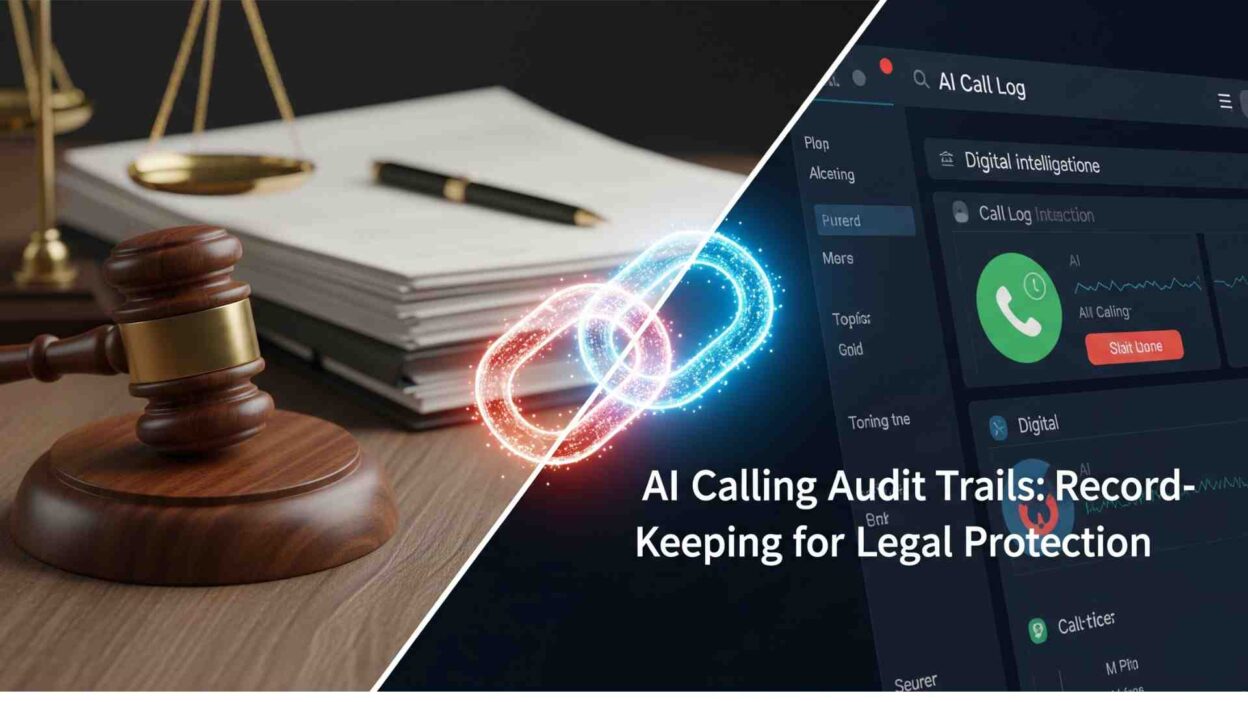AI calling audit trails protect your business from legal risks. These digital records document every voice bot interaction. Companies need proper documentation to meet regulatory requirements. Voice bot compliance documentation helps avoid costly penalties.
Table of Contents
Why AI Calling Audit Trails Matter for Your Business
Legal disputes happen daily in customer service. Traditional call centers struggle with incomplete records. AI voice bots generate detailed interaction logs automatically. These logs serve as evidence in legal proceedings.
Regulatory bodies demand transparency from businesses. Financial institutions face strict recording requirements. Healthcare providers must maintain patient interaction records. E-commerce companies need transaction conversation logs.
Core Components of Voice Bot Compliance Documentation
Call Metadata Records
- Date and time stamps for each interaction
- Caller identification numbers
- Call duration and connection quality
- Geographic location data
- Device information used for the call
Conversation Content Logs
- Complete transcript of spoken dialogue
- Intent recognition results
- Sentiment analysis scores
- Customer satisfaction ratings
- Resolution status and outcomes
System Performance Metrics
- Response time measurements
- Error rate tracking
- Escalation triggers and reasons
- Bot confidence levels
- Integration system responses
Legal Requirements for AI Voice Bot Documentation
GDPR Compliance Standards
European regulations require explicit consent recording. Companies must document data processing activities. AI calling audit trails must include consent timestamps. Personal data handling requires detailed logs.
Customers have rights to access their data. Audit trails help fulfill these requests quickly. Data deletion requests need proper documentation. Privacy breach investigations rely on complete records.
HIPAA Requirements for Healthcare
Medical conversations need special protection. Patient privacy laws demand secure storage. Voice bot interactions contain sensitive health information. Audit trails must encrypt all medical data.
Healthcare providers face heavy fines for violations. Complete documentation protects against compliance issues. Patient consent for AI interactions requires recording. Medical record integration needs proper tracking.
Financial Services Regulations
Banking conversations involve financial advice. Regulatory bodies review customer interactions regularly. AI calling audit trails prove compliance with fair lending laws. Financial institutions must retain records for years.
Consumer protection laws require interaction documentation. Dispute resolution depends on complete conversation records. Investment advice conversations need detailed logging. Credit application processes require full documentation.
Technical Implementation of Audit Trail Systems
Data Collection Methods
Real-time Logging Voice bots capture data during live conversations. System logs record every user input immediately. Response generation gets tracked with timestamps. Error conditions trigger automatic documentation.
Batch Processing Large conversation volumes need efficient processing. System performance improves with batch operations. Daily logs get processed during off-peak hours. Monthly reports compile from batch data.
Cloud Storage Solutions Secure cloud platforms store audit trail data. Automatic backups prevent data loss. Geographic distribution ensures data availability. Compliance-ready storage meets regulatory requirements.
Integration with Existing Systems
CRM Platform Connections Customer relationship management systems need audit data. Sales team actions require conversation context. Support tickets link to voice bot interactions. Marketing campaigns use conversation insights.
Legal Management Tools Law firms need searchable conversation records. Case management systems integrate with audit trails. Evidence collection becomes automated. Legal discovery requests get fulfilled quickly.
Compliance Monitoring Platforms Regulatory reporting requires structured data. Voice bot compliance documentation feeds monitoring systems. Violation alerts trigger from audit trail analysis. Compliance officers review interaction patterns.
Best Practices for Audit Trail Management
Data Retention Policies
Industry-Specific Requirements Healthcare records need seven-year retention. Financial services require five-year storage. Government contracts demand longer retention periods. Legal requirements vary by jurisdiction.
Storage Optimization Older records move to cheaper storage tiers. Compression reduces storage costs significantly. Archival systems maintain data accessibility. Regular cleanup removes unnecessary data.
Security Measures
Access Control Systems Role-based permissions protect sensitive data. Administrative access requires multi-factor authentication. Audit logs track who accessed what data. Regular access reviews prevent unauthorized viewing.
Encryption Standards Data encryption protects information at rest. Transmission encryption secures data movement. Key management systems control access. Regular security audits ensure protection.
Quality Assurance Processes
Regular Audits Monthly reviews check data completeness. Quality metrics track recording accuracy. Missing data triggers investigation procedures. Compliance teams verify regulatory adherence.
Training Programs Staff education covers audit trail importance. Legal teams understand documentation requirements. Technical teams learn proper implementation. Regular updates cover new regulations.
Common Challenges and Solutions
Data Volume Management
Large businesses generate massive conversation volumes. Traditional storage systems become expensive quickly. Cloud solutions offer scalable storage options. Automated archiving reduces active storage needs.
Search capabilities become crucial for large datasets. AI calling audit trails need efficient indexing. Machine learning helps identify relevant conversations. Advanced search tools speed up legal discovery.
Real-time Processing Requirements
Legal disputes need immediate access to records. Voice bot compliance documentation must be instantly available. Real-time systems process conversations as they happen. Emergency access procedures ensure rapid response.
System reliability affects legal protection value. Backup systems prevent data loss. Redundant storage ensures constant availability. Disaster recovery plans maintain business continuity.
Integration Complexity
Multiple systems need audit trail data. Legacy platforms require custom integration work. Modern APIs simplify connection processes. Standardized formats improve compatibility.
Data synchronization challenges affect accuracy. Timestamp consistency prevents confusion. Automated validation checks ensure data integrity. Regular reconciliation identifies discrepancies.
Measuring Audit Trail Effectiveness
Key Performance Indicators
Data Completeness Metrics
- Percentage of conversations fully recorded
- Missing data incident frequency
- System uptime and availability rates
- Data quality scores and accuracy
Compliance Readiness Measures
- Regulatory request response times
- Legal discovery preparation speed
- Audit finding resolution rates
- Compliance violation frequency
Operational Efficiency Gains
- Legal case preparation time reduction
- Customer dispute resolution speed
- Regulatory reporting automation level
- Staff productivity improvements
ROI Calculation Methods
Legal protection value exceeds implementation costs. Prevented lawsuits save significant money. Regulatory compliance avoids heavy fines. Operational efficiency reduces staff overhead.
Risk mitigation provides substantial returns. Business reputation protection has long-term value. Customer trust increases from transparent practices. Competitive advantages emerge from compliance leadership.
Future Trends in Voice Bot Audit Systems
AI-Powered Analysis
Machine learning identifies compliance risks automatically. Natural language processing extracts key information. Predictive analytics prevent potential violations. Automated reporting reduces manual work.
Advanced analytics reveal conversation patterns. Compliance trends become visible quickly. Risk scoring helps prioritize attention. Proactive measures prevent problems.
Blockchain Technology
Immutable records provide ultimate protection. Tampering becomes impossible with blockchain. Regulatory bodies trust blockchain evidence. Smart contracts automate compliance processes.
Distributed storage eliminates single points of failure. Cryptographic proof ensures data integrity. Transparent systems build stakeholder confidence. Decentralized networks improve reliability.
Enhanced Privacy Features
Zero-knowledge proofs protect sensitive data. Homomorphic encryption enables secure processing. Differential privacy adds statistical protection. Advanced anonymization preserves utility.
Privacy-preserving technologies meet strict regulations. Data minimization reduces legal exposure. Consent management becomes more sophisticated. User control increases over personal data.
Implementation Timeline and Costs
Following are the phases:
1. Planning and Design (Weeks 1-2)
- Legal requirement analysis
- System architecture design
- Vendor selection process
- Budget allocation planning
2. Technical Setup (Weeks 3-6)
- Infrastructure deployment
- Integration development
- Security configuration
- Testing and validation
3. Training and Launch (Weeks 7-8)
- Staff training programs
- Documentation creation
- Soft launch execution
- Performance monitoring
4. Optimization (Ongoing)
- Performance tuning
- Feature enhancements
- Compliance updates
- Continuous improvement
Cost Considerations
Initial Investment
- Software licensing fees
- Hardware infrastructure costs
- Integration development expenses
- Training and consulting fees
Ongoing Expenses
- Monthly subscription costs
- Storage and bandwidth fees
- Maintenance and support charges
- Regular compliance audits
Hidden Costs
- Staff time for system management
- Legal consultation fees
- Compliance officer training
- Regular system updates
Read More: Voice Bot Accent Recognition: Serving Diverse Customer Bases
Conclusion

AI calling audit trails provide essential legal protection. Voice bot compliance documentation prevents costly violations. Proper implementation requires careful planning. Technical excellence ensures regulatory adherence.
Businesses cannot afford incomplete records. Legal disputes demand comprehensive documentation. Regulatory compliance protects company reputation. Investment in audit systems pays long-term dividends.
Modern voice bot platforms include audit capabilities. Cloud storage makes implementation affordable. Automated processes reduce administrative burden. Professional systems ensure legal readiness.
Start planning your audit trail system today. Legal protection begins with proper documentation. Compliance requirements will only increase. Early implementation provides competitive advantages.






[…] Political campaign voice bots process thousands of calls simultaneously. Cloud infrastructure scales based on campaign needs. Real-time analytics track call success rates. Data helps optimize messaging strategies. […]
[…] DND registry compliance violations create significant business risks. Fines can range from thousands to millions of dollars. Customer trust erodes when businesses ignore privacy preferences. Brand reputation suffers from negative publicity. […]
[…] Read More: AI Calling Audit Trails: Record-Keeping For Legal Protection […]